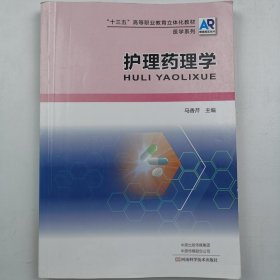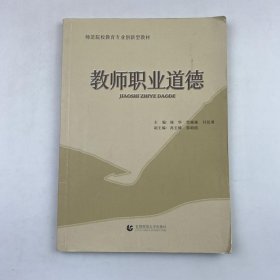
博雅教育:语言学/全国英语专业博雅系列教材
85成左右新,笔记很少、整体很新,无盘无增值服务。品质阅读,经济之选!
¥ 0.1 八五品
仅1件
浙江丽水
认证卖家担保交易快速发货售后保障
作者吴红岩 著;丁建新 编
出版社中山大学出版社
出版时间2013-08
版次1
装帧平装
货号9787306046505
上书时间2024-08-22
- 最新上架
商品详情
- 品相描述:八五品
- 85成左右新,笔记很少、整体很新,无盘无增值服务。品质阅读,经济之选!
- 商品描述
- 书名:博雅教育:语言学/全国英语专业博雅系列教材 吴红岩;丁建新 编 中山大学出版社,作者:'吴红岩;丁建新 编',ISBN:9787306046505,出版社:中山大学出版社
图书标准信息
- 作者 吴红岩 著;丁建新 编
- 出版社 中山大学出版社
- 出版时间 2013-08
- 版次 1
- ISBN 9787306046505
- 定价 36.00元
- 装帧 平装
- 开本 16开
- 纸张 胶版纸
- 页数 229页
- 正文语种 英语
- 【内容简介】
- 《博雅教育:语言学/全国英语专业博雅系列教材》为英语专业本科生使用的专业教材,对现代语言学的基本情况做全面的展示。《博雅教育:语言学/全国英语专业博雅系列教材》与我国流行的一些功能主义的语言学观点不同,侧重介绍乔姆斯基的心理语言学内容。作为语言学的重大分支,这些语言学知识对学生深入了解语言现象具有很好的启发意义。
- 【目录】
-
Chapter1Introduction
1.1Language!ItsNatureandDefinitions
1.1.1TheTraditionalViewofLanguage
1.1.2TheIntemalistViewofHumanLanguage
1.1.3TheDesigningFeaturesofHumanLanguage
1.1.3.1Creativity
1.1.3.2DiscreteInfinity.RecursivenessandMergingOperation
1.1.4TheCommonFemursSharedbyAllHumanLanguages
1.2Linguistics
1.2.1Linguisticsasascience
1.2.2Chomsky’SFiveProblemsforLanguageStudy
1.2.3TheStudyScopeofLinguisticOntology
1.2.3.1CompetenceusPerformance
1.2.3.2TheStudyScopeofGeneralLinguistics
1.3HowtoStudylinguistics
1.4Summary
EXERCISES
Chapter2Phonetics
2.1TheMechanismofArticulation
2.1.1SpeechOrgans
2.1.2ThePhoneticAlphabet
2.2ClassificationofSpeechSounds
2.2.1Consonants
2.2.1.1PlacesofArticu/ation
2.2.1.2MannerofArticu/ation
2.2.2TheAtticulationofVowelSounds
2.3PhoneticSymbolsandSpellingCorrespondences
2.4Summary
EXERCISES
Chapter3Phonology:TheSoundPatternsofLanguage
3.1PhoneticsandPhonology:NarrowandBroadTranscription
3.1.1PhoneticsorPhonology
3.1.2NalTOWandBroadTmnseription
3.2SomePreIiminaryTerminologiesinPhonologicalAnalysis
3.2.1Phonemcs.PhonesandAllophones
3.2.2MinimalPaits.PhonemicContrastandComplementaryDistribution
3.3DistinctiveFeaturesofPhonemes
3.4TheRulesofPhonology
3.4.1AssimilationRules
3.4.2SegmentInsertionandDeletionRules
3.4.3SequentialRules
3.5SyllableStructureandSuprasegmentalFemurs
3.5.1SyllableStructure
3.5.2Stress
3.6Summary
EXERCISES
Chapter4Morphology
4.1MorphemeandMorphology
4.1.1TheClassificationofMorphemes
4.1.2InflectionalandDerlvationalAffix
4.1.3Root.StemandBase.
4.1.4Allomorphs
4.2Words
4.2.1TheDefinitionandIdentificationofWords
4.2.2Word.foimation
4.2.2.1Derivation
4.2.2.2compounding
4.2.2.3Borrowing
4.2.2.4Coinage
4.2.2.5Conversion
42.2.6Back-formation
4.2.2.7Blends
4.2.2.8RedacedWords
4.3Lexicon
4.4Summary
EXERCISES
Chapter5Syntax
5.1TheStudyScopeofSyntax
5.2BasicTerminology
5.2.1CategoriesandFunctions
5.2.1.1Grammatical(orSyntactic)Categories
5.2.1.2Grammatical(orSyntactic)Functions
5.2.2FinitenessVS.Non.finiteness
5.3SentenceStructure
5.3.1PhraseStructureRulesandTrees
5.3.2X.barTheory
5.3.3Merger
5.4Movement
5.4.1}Ieadmovement
5.42Wh—movement
5.5StructuralAmbiguity
5.6Summary
EXERClSES
Chapter6Semantics
6.1LexicaISemanticsWordMeanings
6.1.1ReferenceandSense
6.1.2SenseRelations
6.1.2.1SynonymyandSynonyms
6.1.2.2AntonymyandAntonyms
6.1.2.3Hyponymy:SuperordinateorHyponyms
6.1.2.4MeronymyandMeronyms
6.1.2.5ttomonymyandHomonvms
6.1.2.6Polysemy
6.1.3SemanticFeaturesorComponentialAnalysis
6.2SentenceMeaning
6.2.1SentenceRelationsTruth.conditionalSemantics
6.2.2SentenceAnalysis
6.2.2.1ComponentialAnaflysisforSentences
6.2.2.2PredicationAnalvsis
6.2.2.2.1ArgumentStructure
6.2.2.2.2ThematicRoles
6.3Summary
EXERC:ISES
Chapter7Pragmatics
7.1SomeBasicQuestionsinPragmaticStudy
7.1.1WhatIsPragmatics
7.12WhvDoWeCallPragmaticsaWastebasket
7.1.3WhyShouldWeStudyPragmatics
7.1.4What’stheDifferenceAmongSyntax,SemanticsandPragmatics
7.15Meaning:SentenceMeaningorUtteranceMeaning
71.6MeaningandContext’
7.2TheCoversationalPrinciplesandImplicature
7.2.1TheCooperativePrinciole
7.22ConversationalImplicature
72.3PolitenessPrinciple
73SpeechActTheory
7.3.1OneURerance,ThreeRelatedActs
7.3.2SpeechActClassification
7.3.3DirectandIndirectSpeechActs
7.4Summary
EXERCISES
Chapter8LanguageAcquisition
8.1FirstLanguageAcquisition(FLA)
8.1.1TheInnatenessHypothesis
8.1.2TheLogicalProblemofLanguageAcquisition
8.1.3PovenvoftheStimulus
8.2SecondLanguageAcquisition(SLA)
82.1SomeBasicDistinctions
8.2.2TheStudyScopeintheFieldofSLA
8.2.3ContrastiveAnalysisandErrorAnalysis
8.2.3.1IdentificationandClassificationofErrors
8.2.3.2ContrastiveAnalysis
8.2.3.3ErrorAnalysis
8.2.4TheMajorHypothesesinSLA
8.2.4.1InterlanguageHypothesis
8.2.42TheHypothesis·TestingHypothesis
8.2.43NaturalOrderHypothesis
8.2.44Comprehensiblel~putHypothesis
82.45TheFrequencyHypothesis
8.2.46TheInteractionHypothesis
8.2.4.7Swain'sComprehensibleOutputHypothesis
8.2.4.8TheCriticalPeriodHypothesis
8.3FourConditionsforLanguageLearning
8.4Summary
EXERCISES
Chapter9Neurolinguistics
9.1TheBrainStructureandItsLateralization
9.2BrainPlasticityinEarlyLife
9.3LanguageDisorder——Aphasia
9.3.1Broca’SAphasia
9.3.2Wernicke’SAphasia
9.3.3SpecificLanguageImpairment(SLI)
9.3.4TheImplicationsoftheStudyfortheAphasicPatients
9.4LanguageSavants
9.5LanguageGene
9.6Chomsky’SBiolinguisticPerspective
9.6.1WhatIsaBiolinguisticPerspective?
9.6.2TheNatureofLanguaget
9.6.3TheEvolutionofLanguage
9.6.4InternalThought.ExternalizationandCommunication
9.7Summary
EXERCISES
SuggestedAnswers
Bibliography
GIossaryandIndex
点击展开
点击收起
— 没有更多了 —





















以下为对购买帮助不大的评价